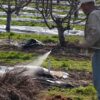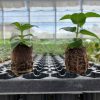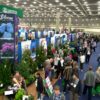Article Submission for Greenhouse Grower’s Benchrunner.
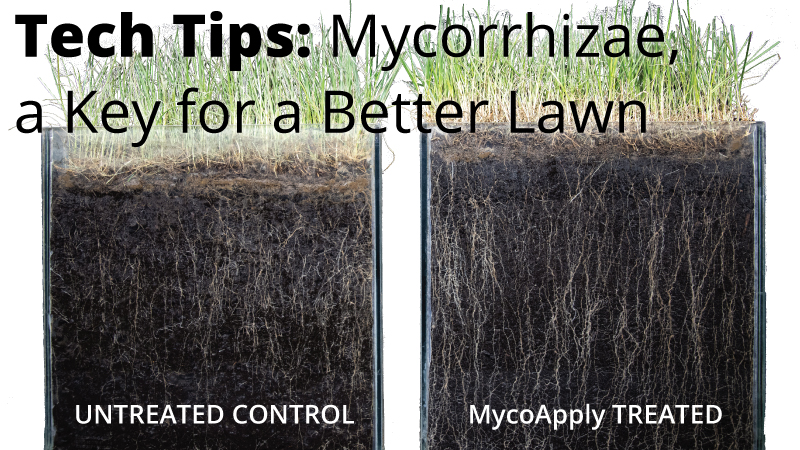
Before I jump into this subject, you might be asking why I am writing an article for a greenhouse publication about turf. I am writing this article for several reasons:
- The principles behind why mycorrhizae is a wise addition to a greenhouse growing protocol are the same reasons why mycorrhizae are an effective tool for a Turf Professional’s growing protocol.
- Many greenhouse growers are also grower retailers, so understanding the value of mycorrhizae in turf can benefit their garden center sales.
- Many people I come into contact with in the industry ask me, “How can I use mycorrhizae on my home lawn?”
Horticulturists, whatever their role in this industry, should consider the adoption of mycorrhizal use to reduce the potential and mitigate the impacts of abiotic stress. Abiotic stress can be defined as the negative impact of a non-living factor on a living organism (turf or a greenhouse plant for this article). This could include light, cold temperatures (chill), high temperatures (heat), drought, excess water, air humidity, soil type (whether mineral or soil-less media), salinity (EC), pH, dissolved oxygen in your water, nutrient availability (excess or deficiency), and heavy metal toxicity. The list of potential abiotic stressors is long and is constantly changing, particularly as we become more impacted by climate change.
Before I specifically start talking about mycorrhizae use in turf, let me step back and review the role mycorrhizae plays in nutrient and water management. Mycorrhizae live within the rhizosphere, a region of soil close to the root that can directly be influenced by root secretions and other microorganisms. The mycorrhizae form symbiotic (mutually beneficial) relationships with plants and expand the root absorptive area of the plant up to fifty times. The expansion of the root absorptive area can include more roots but is more often the proliferation of a mycorrhizal hyphal network.
This relationship starts when the plant root senses the mycorrhizae propagule in the surrounding area and it releases an exudate to activate the mycorrhizae, which in turn grows and attaches to the plant root. The propagule needs to be half an inch (1.3 cm) or less from the root tip for symbiosis to initiate. Endomycorrhizae physically enter the plant cell, hence “Endo” and Ectomycorrhizae grow in between the plant cells, hence “Ecto”. Once attached the mycorrhizae then start to develop a mycorrhizal hyphal network (root absorptive area) in the mineral soil or soil-less media. These hyphae are typically one-tenth the size of a root hair and can extend up to twenty-four inches (61 cm) beyond where they are attached to the root.
Now let’s turn specifically to the turf. The information I am sharing applies to both warm and cool-season turfgrass varieties. The same information applies to whatever type/species of grass or blend you might be growing whether it is cool season – fescue, bluegrass, bentgrass, or ryegrass; or warm season – bahiagrass, bermudagrass, carpetgrass, St. Augustine, zoysiagrass, or centipedegrass. Some of the abiotic stresses that impact turf specifically include traffic (wear), mowing, the environment, water quality and quantity, soil (could be natural or modified i.e., sand), cultural or management practices, turf type, and how it is used.
Certain cultural practices positively impact mycorrhizal use and performance in turf. These practices include aerification, proper mowing height, drainage, watering, fertilization, and topdressing. Other turf management practices negatively impact the value and benefits of the use of mycorrhizae. These negative practices include the use of some specific fungicides. Most fungicides cause no problems with mycorrhizae. You can refer to this list for more information. Heavy fertilization causes the turf to not benefit from the mycorrhizal relationship because it does not need the mycorrhizae to get the nutrients it requires. Turf that is managed with a mowing height that puts the leaf/stem-to-root ratio out of balance is also not good for mycorrhizae. Mycorrhizae are fed by the plant, and if the plant is limited in its ability to supply sugars and lipids due to a lack of canopy, the mycorrhizae population suffers. Mycorrhizae can handle a variety of soil types. However, soils that are compact, do not drain well, and are in generally poor condition to support good plant growth are an additional challenge for mycorrhizae. Overwatering turf can also negatively impact the value mycorrhizae can provide turf.
Recent trials at Rutgers University have shown the value of applying MycoApply mycorrhizae to turf. After being treated to normal care (water and fertilization) Fairway turf (like a sport field or a home lawn) was subjected to a 50% watering deficit for six weeks. Multiple measurements were made before, during, and after the water deficit treatment. Turf treated with our granular MycoApply Endo product demonstrated improved drought stress tolerance. This tolerance was both a delay in the impacts of the water deficit impacting the turf and a shortened recovery period once normal watering and fertilization were resumed.
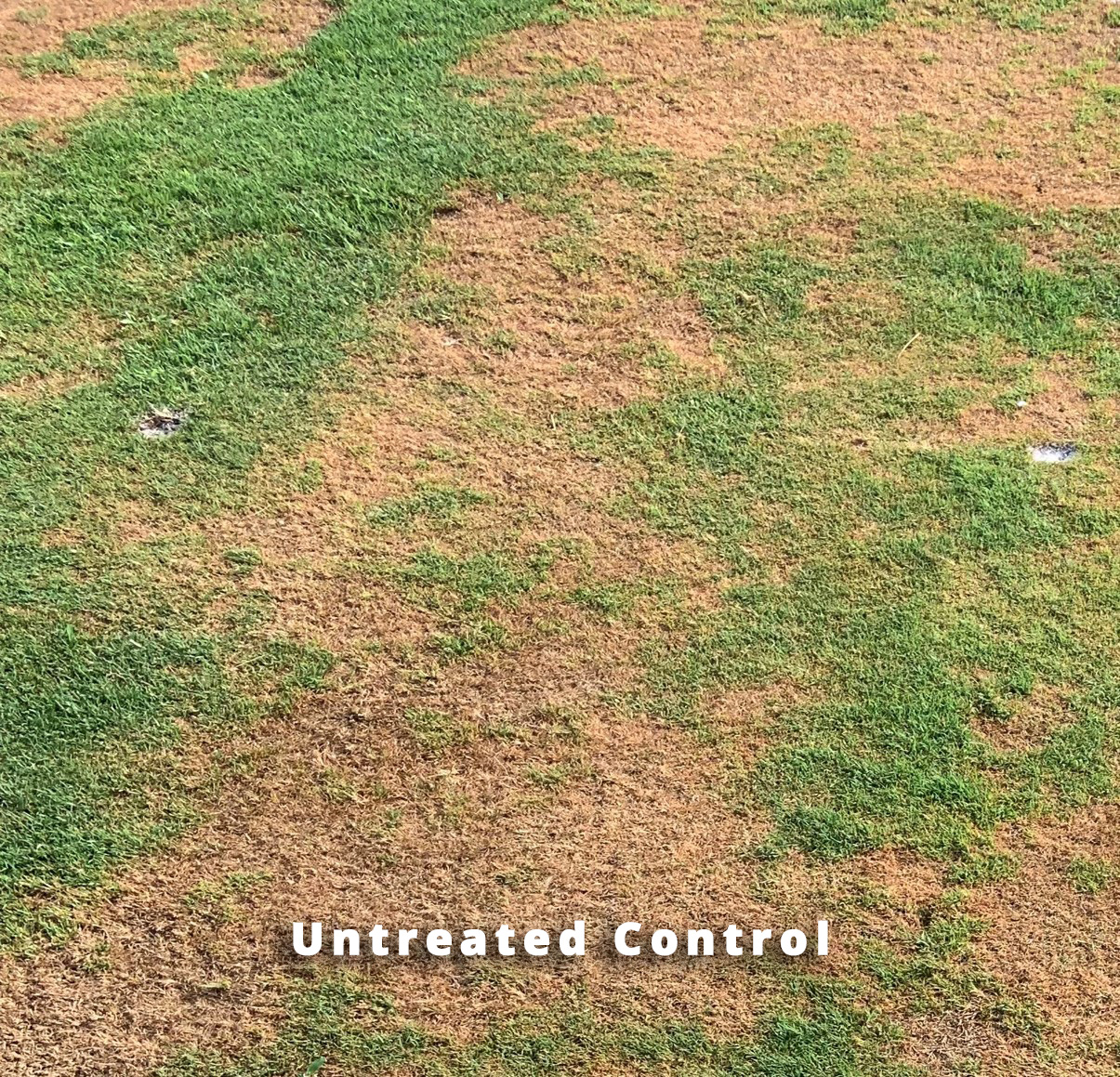
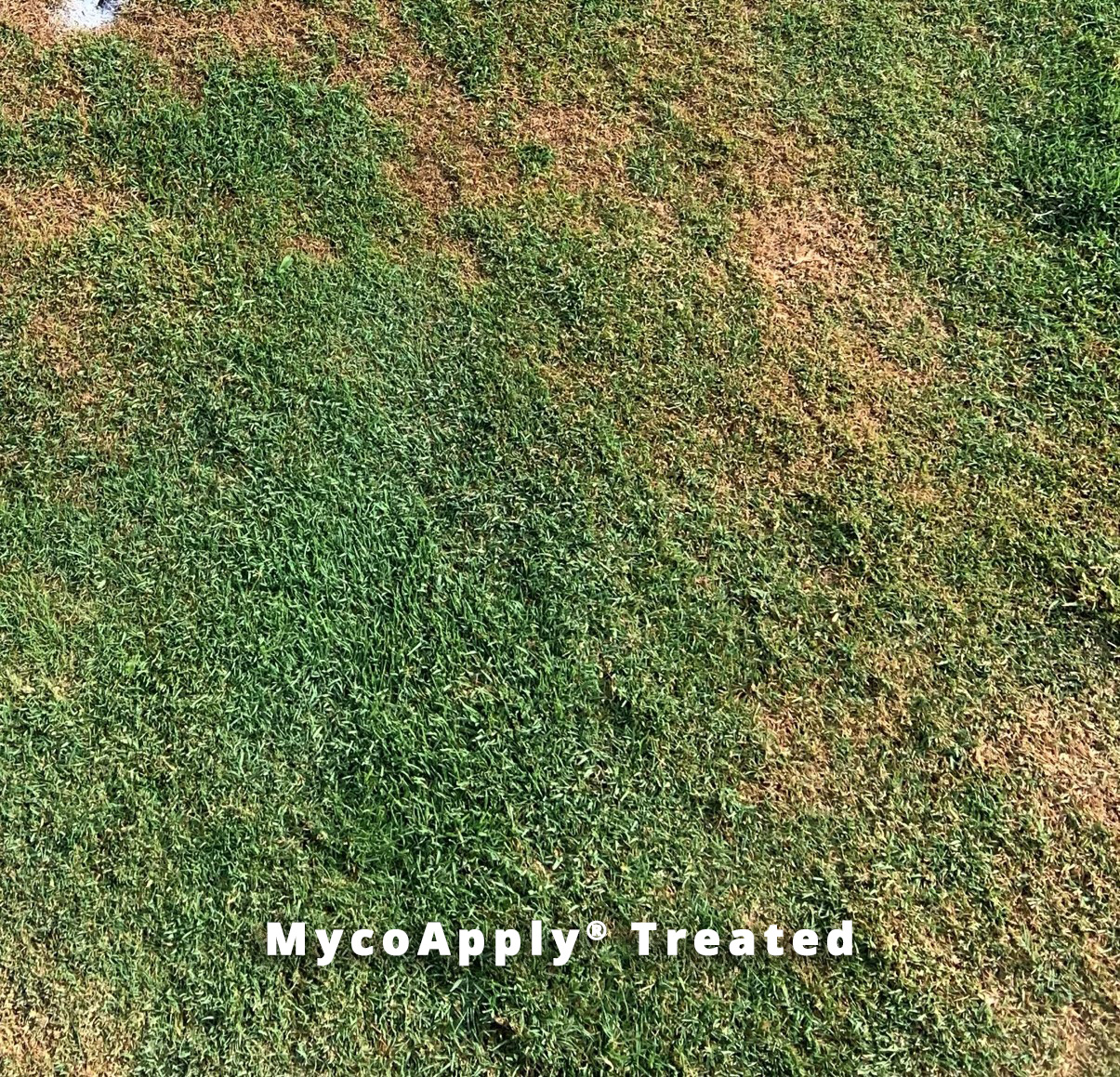
In short, mycorrhizae use in turf delays the impacts of abiotic stress (water deficiency) and quickens the recovery period once normal care is returned. Mycorrhizae gives the turfgrass plants both strength and resilience, what more could a turf professional, or homeowner ask for?
For turf application information, please refer to this document. The same products that work in a greenhouse or nursery also work for turf.
If you have any questions about anything covered in this article or MycoApply Mycorrhizae, please contact your local Mycorrhizal Applications Representative or call 866-476-7800 or email us at inquiries@mycorrhizae.com.
Article by: Blair Busenbark
Mycorrhizal Applications – Sales and Commercial Marketing Manager
May 3, 2023

